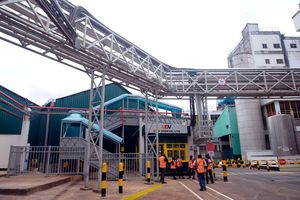Premium
Are we winning the war on malaria or not?

What you need to know:
- Data shows that African countries continue to carry a disproportionately high burden of malaria cases.
- But new technologies like the malaria vaccine are changing the prognosis and outcomes of the disease.
A convergence of threats are still impacting malaria control in Africa: resistance to antimalarial drugs and insecticides, reduced performance of malaria rapid diagnostic, invasive mosquito species (known as Anopheles stephensi), wars and conflicts, and epidemics such as Ebola and Covid-19.
Data shows that African countries continue to carry a disproportionately high burden of malaria cases. The latest World Health Organization (WHO) malaria report shows that 241 million cases were reported in 2020. During the same period, 627,000 malaria deaths worldwide were reported.
The world was making good progress against malaria in the first 15 years of this century. But in recent years, forward momentum has levelled off. Africa is disproportionately affected, with 95 per cent of malaria cases and 96 per cent of deaths concentrated in sub-Saharan Africa. Eighty per cent of all deaths in Africa are estimated to be among children under the age of five.
Beneath the tropical and sub-tropical climates, rainfall patterns and temperate beauty lies a dark and dreadful reality, thanks to a high malaria infection rate in the continent. In Uganda, human activity and poor drainage marry to create a perfect breeding ground for the mosquitoes, which transmit this killer disease.
While other African countries have brought their transmission rates down in the last 20 years, in Burundi, cases of infection have been going in the opposite direction, rising more than twofold two years ago, the Malaria Journal observes. In Kenya, for instance, there are an estimated 3.5 million new clinical cases and 10,700 deaths each year, and those living in western Kenya have an especially high risk of malaria.
Although some countries and island states like Cape Verde (or Cabo Verde), São Tomé and Príncipe, and Zanzibar have managed to reduce malaria cases and enter the pre-elimination stage, experts note that the techniques used to slash the cases are not easy to replicate. This is because the states that have managed to eliminate malaria are small, therefore implementing malaria control strategies (like spraying, ridding off swampy waters, timely testing and treatment, and encouraging people to sleep under treated bed nets) is not so tedious a process.
Africa faces a number of curveballs, notes Dr Fredros Okumu, a parasitologist and entomologist who currently works as director of science at the Ifakara health institute (IHI) in Tanzania. These include an efficient mosquito (Anopheles gambiae complex) responsible for high transmission, altitude, rainfall patterns and temperature, scarce resources and socio-economic instability. This is in addition to the continued uncertainty and disruptions caused by the Covid-19 pandemic.
After Asia, Africa is the largest and most populous of the seven continents. Central Africa has highest rate of close to three per cent followed by Western Africa and Eastern Africa growing over two per cent. In 2001, Africa’s population stood at 831 million. In 2021, that number increased to 1.4 billion.
Yet, the strategies have not been revised. As such, resistant malaria 'has gained a foothold in Africa'. Researchers recently identified a plasmodium species that is resistant to artemisinin — the main component of first-line treatments for malaria in endemic areas — in Uganda and Rwanda. Artemisinin resistance is already prevalent in Southeast Asia, and experts have expressed concern that it will emerge in other regions.
Reduction of malaria in Africa is affected due to a combination of factors: an efficient mosquito (Anopheles gambiae complex) is responsible for high transmission, altitude, rainfall patterns and temperature, scarce resources and socio-economic instability.
Malaria imposes substantial costs to both individuals and governments. The most vulnerable are persons with no or little immunity against the disease. In areas with high transmission (such as Africa south of the Sahara), the most vulnerable groups are: young children who have not yet developed partial immunity to malaria; pregnant women whose immunity is decreased by pregnancy, especially during the first and second pregnancies; and travellers or migrants coming from areas with little or no malaria transmission and therefore lack immunity. And the costs to individuals and their families and governments are high.
But new technologies like the malaria vaccine are changing the prognosis and outcomes of the disease. Before the rollout of the RTS,S vaccine in 2019, data from Jaramogi Oginga Odinga Teaching and Referral hospital in Kisumu indicates that the hospital would admit about five children a day in need of blood transfusion. However, three years later, the severe cases have gone down and several months can pass before a case is admitted to the hospital for blood transfusion.
In this series, the HealthyNation team looks at the progress made in the fight against the disease, the challenges faced and the path towards elimination.




